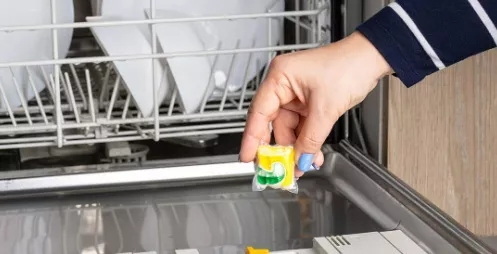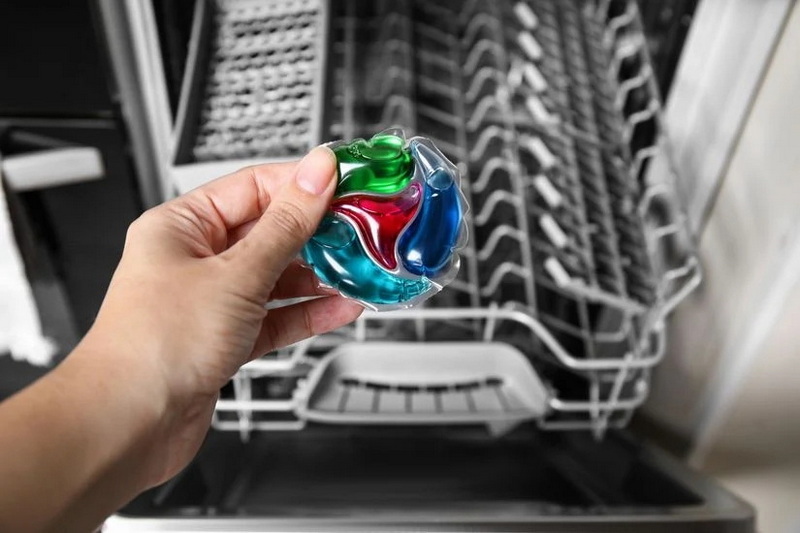Dongguan UFine Daily Chemical Co.,Ltd.
- All
- Product Name
- Product Keyword
- Product Model
- Product Summary
- Product Description
- Multi Field Search
Views: 222 Author: Tomorrow Publish Time: 11-16-2025 Origin: Site











Content Menu
● Detergent Basics: Pods vs. Tablets vs. Powder
● Key Factors for Pod Use in Drawer Dishwashers
>> 1. Dispenser design and pod compatibility
>> 2. Cycle selection and dissolution timing
>> 3. Water pressure and spray dynamics
>> 5. Manufacturer guidance and warranty considerations
● Practical Guidance for Using Pods
● Extended Considerations: Environment, Cost, and User Habits
● User Habits and Loading Practices
● Troubleshooting Pods in Drawer Dishwashers
● FAQ
>> 1. Can I use dishwasher pods in any drawer dishwasher?
>> 2. Why might my dishware not be clean when using pods in a drawer dishwasher?
>> 3. Are there specific pods recommended for drawer dishwashers?
>> 4. Will using pods affect my warranty?
>> 5. Should I switch to tablets if pods don't dissolve well?
Drawer dishwashers have grown in popularity for their compact design, efficient cleaning cycles, and modern aesthetics. As kitchens evolve, so do the questions about how best to use these appliances. One recurring inquiry among buyers and users is whether drawer dishwashers can accommodate dishwashing pods. This article dives into the mechanics, compatibility, and practical considerations surrounding using pods in drawer dishwashers. It provides a clear, structured overview to help readers make informed choices.

Drawer dishwashers are designed to fit a variety of dishes, utensils, and cookware while offering flexible loading patterns. Unlike traditional front-loading or top-loading models, drawer units operate with a sliding mechanism that opens like a drawer. This design can affect how detergent is dispensed and how water jets reach every item. Understanding detergent compatibility is essential to achieving optimal cleaning results and avoiding residue or poor performance.
Detergent formats differ in composition, dosing, and dissolution behavior. Detergent pods are pre-measured packets that dissolve in water to release cleaning agents. Tablets are similarly pre-measured but may require different storage or placement, depending on the design. Powder detergents are loose granules that rely on correct dosing and proper distribution.
- Pods are convenient and mess-free but rely on dissolution timing for effective cleaning.
- Tablets can offer consistent dosing and sometimes include rinse aids or clarifiers.
- Powder detergents allow for adjustable dosing but require careful measurement and placement.
Detergent compatibility with drawer dishwashers hinges on the dispenser design and the product's ability to dissolve quickly in the exact water temperature and cycle duration the machine uses.
Most drawer dishwashers feature a detergent compartment with a seal and a detergent tray or one or two compartments for detergent. Some models are marketed as compatible with dishwasher pods, while others advise using tablets or powders. The shape, sealing mechanism, and opening timing of the dispenser influence how well a pod dissolves. If the pod is designed for standard European or American dishwashers, it may still work in a drawer model, but the dissolution pattern could differ.
Pods require adequate water temperature and agitation to dissolve before the wash begins. Drawer dishwashers often have short or mid-length wash cycles with different pre-rinse and main wash phases. If the cycle is too quick or the water is too cool at the dispense moment, the pod may not fully dissolve, potentially leaving residue or not releasing cleaning agents properly.
The distribution of spray arms in drawer dishwashers can vary from model to model. Some drawers have multiple spray zones or a single, focused spray pattern. Pods rely on even distribution of detergent; if the cycle's water flow does not reach the pod area promptly, dissolution may be uneven, affecting cleaning performance.
If a pod does not dissolve entirely during the wash, fragments can leave residues on glassware or dishes. This is more likely in cycles with shorter run times or cooler wash phases. Consumers should monitor initial uses of pods in a new drawer model and consider switching to tablets or powders if dissolution issues appear.
Always check the user manual and the detergent section for recommended products. Some manufacturers explicitly state that pods are not recommended for their drawer dishwashers, while others endorse pods as a convenient option. Using an unendorsed detergent format could affect warranty validity or cleaning results.
- Start with a model that explicitly supports dishwasher pods in the manual or product specifications.
- Choose pods that are labeled as compatible with automatic dishwashers and designed to dissolve quickly in the given water temperature range.
- Use the recommended detergent amount. Pods are pre-measured; do not exceed the recommended quantity or use additional powder.
- Place the dishes so that the pod's release point is not obstructed by tall items or closed compartments.
- Run a test cycle with a small load to observe dissolution, residue, and overall cleanliness before committing pods for routine use.
- Consider switching to dishwasher tablets if dissolution issues persist, or if the manual suggests tablets as the preferred format.

Pod detergents often come in sealed packaging designed to reduce spillage and waste, which can be convenient and reduce mess. However, the plastic sleeves or wrappers for individual pods contribute to plastic waste. Tablets and powders may have different packaging footprints. For eco-conscious users, evaluating packaging materials, refill options, and the overall lifecycle of the product is important.
Pods may appear costlier per load than powders or tablets due to the convenience factor. When evaluating cost, consider dsitribution patterns and the need to avoid overdosing. In some markets, bulk tablet formulations or powders offer cheaper per-cycle costs, especially for large households or high-frequency use.
Even with pods, loading practices dramatically influence results. Avoid overloading and ensure items are aligned with water jets. Heavy pots and pans can shield other dishes from spray, reducing cleanliness. Regularly rotate rack positions in the drawer if the model allows, to maximize coverage. For users who frequently run mixed loads, tablets might offer more reliable performance due to their varied release timing and rinse aid components.
- If residue appears, try a tablet instead of a pod to see if dissolution timing improves results.
- If the dishwasher emits a faint detergent scent after cycles, it could indicate under-dosed detergent or incomplete rinsing.
- If the machine shows overly foamy cycles, verify the detergent type and ensure it is designed for automatic dishwashers and compatible with your water hardness.
- If cycles seem unusually long or incomplete, check for clogs in spray arms or filters, which can affect distribution and dissolution.
- Clean the detergent dispenser monthly to prevent buildup that can block pod release.
- Periodically inspect the gasket seals around the drawer opening to prevent leaks during cycles.
- Run a quarterly cleaning cycle with a dishwasher cleaner to minimize mineral buildup that can impact dissolution timing.
- Reassess detergent choice after moving to a different water hardness setting or changing household water supply conditions.
- Keep pods out of reach of children and pets; pod detergents can resemble candy and pose ingestion risks.
- Never mix different detergent formats in the same load, as incompatible chemicals can produce toxic fumes or foaming issues.
- Follow the manufacturer's guidance on maximum load size and recommended detergent type to avoid harm to the machine or user.
- Pods always dissolve perfectly in all dishwasher models: not true. Dissolution depends on cycle length, temperature, and dispenser design.
- Drawer dishwashers cannot use any pods: some models are designed to work with pods, while others are not recommended. Always verify with the manufacturer.
- Pods are superior in every situation: pods provide convenience, but tablets or powders can offer more control over dosing in certain loads.
drawer dishwashers can take pods, but compatibility is model-specific. The most reliable approach is to consult the user manual or manufacturer support to confirm pod compatibility and recommended detergent formats. If dissolution issues arise, consider switching to tablets or powders that align with the dispenser design and cycle sequence. With careful loading, cycle selection, and ongoing maintenance, pods can be a convenient option for many drawer dishwasher users, while ensuring dishes come out clean and free of detergent residues.

- Not in every model. Check the user manual or manufacturer guidance to confirm compatibility and recommended detergent formats.
- Potential causes include incomplete pod dissolution due to cycle timing or temperature, improper loading blocking the pod release, or mineral buildup affecting detergent effectiveness.
- Some manufacturers publish a list of compatible pod brands or types; if not available, choose pods labeled for automatic dishwashers with quick-dissolving properties and follow load recommendations.
- It can. Some brands require adherence to recommended detergent formats. Using unendorsed pods may affect warranty coverage or cleaning outcomes.
- Yes. Tablets are often formulated to work well with a variety of dishwasher designs and can provide more consistent dissolution and release timing.